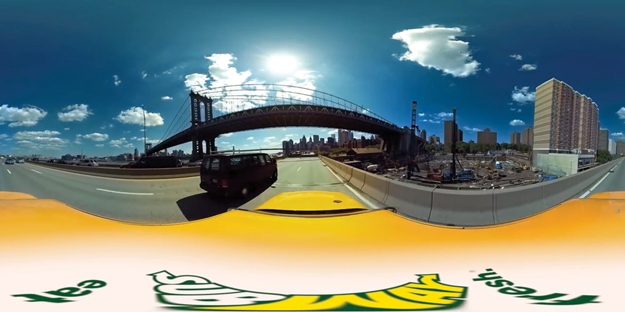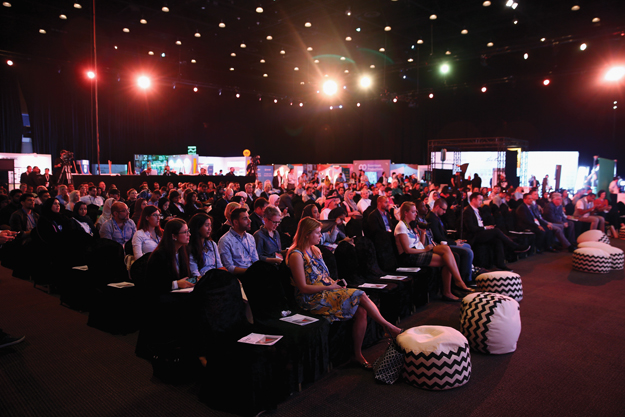News - Digital/Tech
Virtual Reality, the New Frontier
by Fayza Bjayou
March 6, 2016
.jpg) Advertisement
AdvertisementGosling affirms there to be a growing appetite for 360-degree content - video content created from multiple cameras, which is usually done after the video has been recorded. YouTube’s platform already supports 360-degree videos; however, it is now preparing to roll out live 360-degree video’s accessible for any viewer to interact with via a mobile or desktop device. It would work just like any other YouTube video – except the viewer can watch the content from different angles and view points. Gosling reiterates the increasing power of VR. “Facebook brings 360-degree videos one step closer with the help of Oculus – the virtual reality company that was bought by Facebook in 2014.” According to Gosling, Goldman Sachs predicts that VR will be bigger than TV in 10 years.
Google Cardboard, their playful, smartphone-based VR platform, takes an inexpensive cardboard constructed viewer and transforms a consumer’s everyday phone into a VR headset, offering a brand new immersive experience. It is the belief that Cardboard will be the way that Google will make virtual reality experiences accessible to everyone. Gosling explains that the reaction so far has been very positive and immediate. As a result, Google has expanded its platform and hired even more virtual reality makers to join their team.
Gosling focuses upon VR in the context of education. Adding further dimension to the quality of one’s learning experience, Google Expeditions Pioneer Programme is a virtual reality platform that has been built for the classroom. Google worked with teachers and content partners from around the world to create more than 100 engaging journeys - making it easy to immerse students in entirely new experiences. The Expeditions Pioneer Programme is a device that brings the world to the classroom.
Gosling asserts that VR is fast becoming an important tool for companies. He highlights this point giving the example of Honeywell’s aviation software. “This software makes air travel easier and safer but prior to their use of virtual reality, a life-size fuselage was transported for showcase, to demonstrate the value of the product in relation to the context of the environment it was designed for (expensive and time consuming). Introducing virtual reality enabled their consumers to learn and understand the value of the product through an immersive, personal experience – an innovative, cost and time-effective solution for Honeywell”.
Creating new and exciting consumer experiences with VR was most recently executed by the American fast food franchise, SUBWAY. According to Gosling, the famous chain created an event film to launch their latest edition to their menu, the Beef Pastrami Melt. A VR headset was used to transport volunteers from a yellow taxi on the South Bank in London, to the heart of New York, all whilst tucking into the SUBWAY’s Beef Pastrami Melt. The Virtual Reality footage captured shots from the heart of the Big Apple - achieved through the recording of footage gathered from several cameras positioned in a New York taxi. Gosling affirms that such a campaign successfully played on all the senses to achieve a heightened level of consumer engagement.
In context to the importance of VR, Gosling aptly quotes the words of the ancient philosopher, Confucius. “Tell me, and I will forget, show me, and I may remember, involve me, and I will understand.” He concludes that the statistics prove that more people will remember content presented in VR than stories shared in 2D; virtual reality experience has more impact on emotions and cognition than a 2D video. Brands and agencies have taken note of the dynamic nature of VR and are recognising it as an entrée into the next generation of storytelling mediums. It is clear that VR is fast becoming a key asset of the entertainment, industry, education and healthcare.





.jpg)







